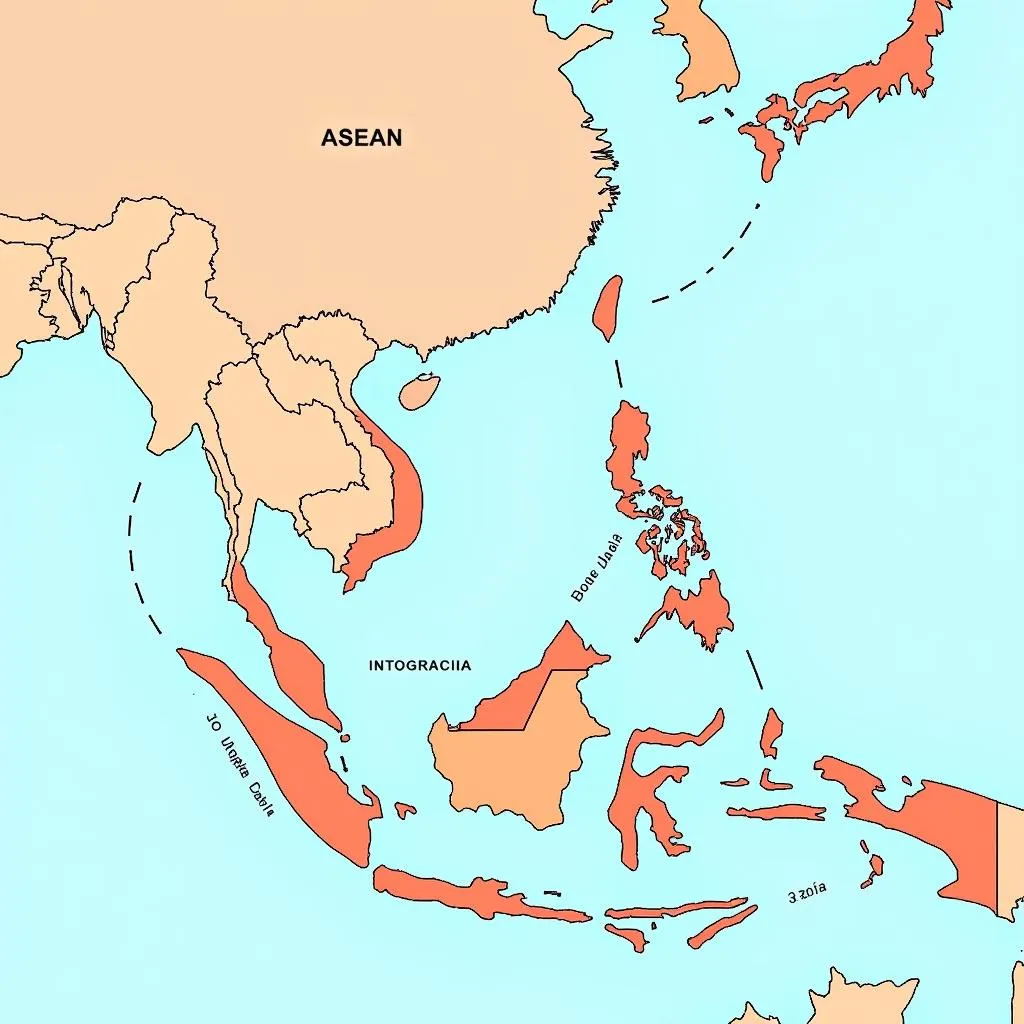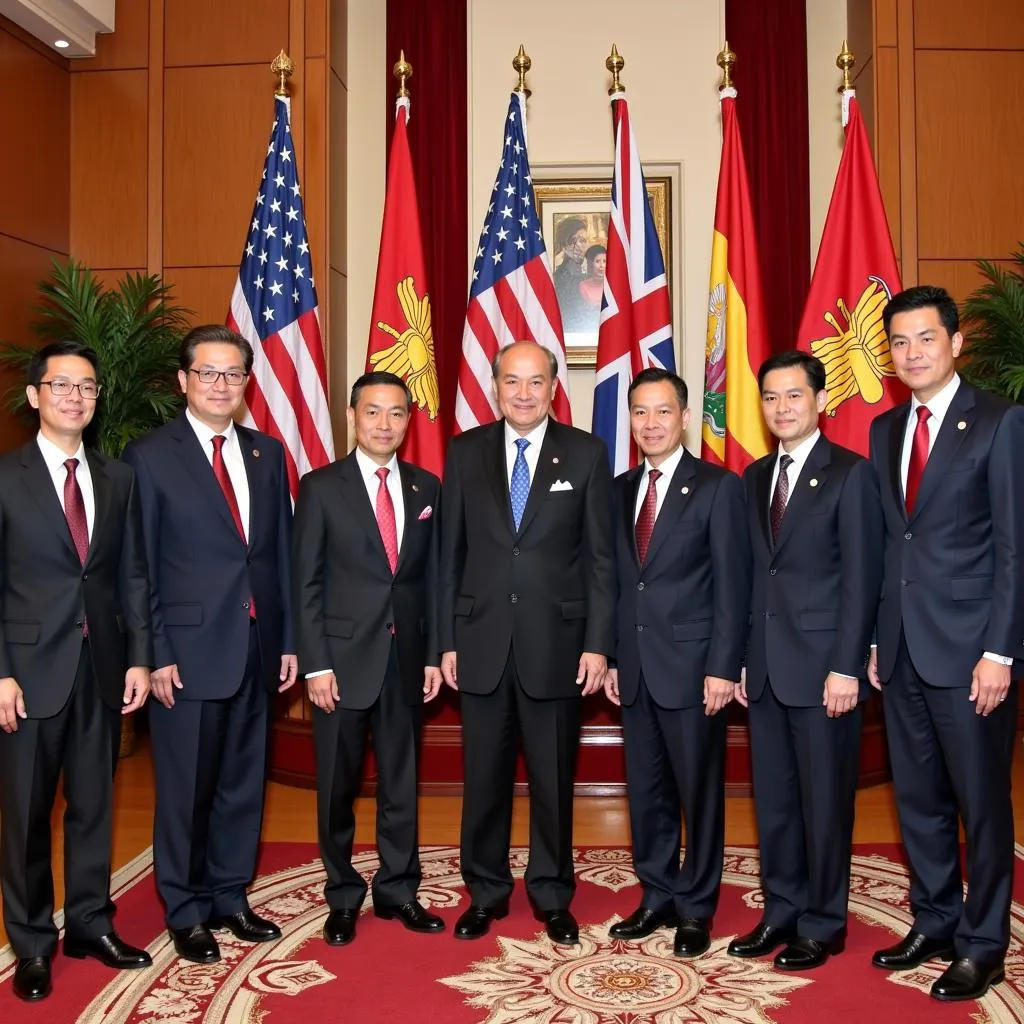The phrase “ASEAN 90” evokes a pivotal era in Southeast Asia’s history, a period marked by remarkable economic progress, regional integration, and a surge in international influence. This era, encompassing the 1990s, witnessed the region emerge as a global powerhouse, driven by bold economic reforms, visionary leadership, and a shared commitment to cooperation. Understanding the key factors that shaped this transformative period can provide invaluable insights for businesses and individuals seeking to navigate the complexities of Southeast Asia’s dynamic landscape.
This article delves into the historical journey of ASEAN 90, examining the drivers of economic growth, the milestones in regional integration, and the challenges encountered along the way. We will explore how these experiences have shaped the ASEAN of today, a region poised to continue its remarkable ascent in the years to come.
The Dawn of a New Era: Economic Reforms and Growth
The 1990s witnessed a dramatic shift in Southeast Asia’s economic trajectory. Embracing free market principles, countries like Indonesia, Malaysia, Thailand, and Vietnam implemented ambitious structural reforms. These reforms included:
- Deregulation: Removing bureaucratic barriers to entry for foreign investment and businesses.
- Privatization: Transferring state-owned enterprises to private ownership to boost efficiency and competitiveness.
- Trade Liberalization: Opening up domestic markets to international trade, fostering a dynamic business environment.
These reforms, coupled with strategic investments in infrastructure, technology, and human capital, propelled the region’s economic growth. Southeast Asia became a magnet for foreign direct investment, attracting capital and expertise from around the world.
The Rise of Regional Integration: Building a Collective Identity
The 1990s also saw ASEAN make significant strides in regional integration, establishing a framework for collective action and fostering greater collaboration.
- ASEAN Free Trade Area (AFTA): Launched in 1992, AFTA aimed to eliminate tariffs and non-tariff barriers among member states, facilitating free trade and boosting intra-regional commerce.
- ASEAN Vision 2020: Adopted in 1997, this document outlined a roadmap for ASEAN to become a “stable, prosperous, and highly competitive region with a shared identity” by the year 2020.
- ASEAN Regional Forum (ARF): Established in 1994, ARF serves as a platform for dialogue and cooperation on security issues, enhancing regional stability and promoting peace.
These initiatives laid the groundwork for a more integrated ASEAN, fostering a sense of shared purpose and identity among member states.
Challenges and Resilience: Overcoming Adversity
Despite the economic and political progress achieved in the 1990s, ASEAN also encountered significant challenges:
- The 1997 Asian Financial Crisis: The region experienced a severe financial crisis, highlighting the need for strengthened financial cooperation and regulatory frameworks.
- Political Instability: Some countries faced political unrest and instability, posing challenges to economic development and regional integration.
- Environmental Degradation: Rapid economic growth came with environmental consequences, emphasizing the need for sustainable development practices.
However, ASEAN displayed remarkable resilience, drawing on regional cooperation and collaborative problem-solving to weather these storms and emerge stronger.
ASEAN 90: A Legacy of Progress and Potential
The era of ASEAN 90 left an indelible mark on Southeast Asia. It was a period of significant economic transformation, regional integration, and a growing sense of collective identity. The region’s economic dynamism, fostered by bold reforms and strategic investments, attracted global attention and placed Southeast Asia firmly on the world map.
The legacy of ASEAN 90 provides valuable lessons for the future:
- The Power of Regional Cooperation: The success of ASEAN 90 underscores the importance of collective action in addressing shared challenges and harnessing regional potential.
- The Importance of Economic Reforms: Open markets, sound policies, and a commitment to innovation are essential drivers of sustained economic growth.
- The Need for Sustainable Development: Integrating environmental considerations into economic policies is crucial for achieving long-term prosperity.
ASEAN continues to evolve and adapt to the changing global landscape. The region’s journey into the 21st century is marked by new opportunities and challenges, but the lessons of ASEAN 90 remain relevant and provide a foundation for continued progress.
Frequently Asked Questions (FAQs):
-
Q: What are the key factors that contributed to ASEAN’s economic growth in the 1990s?
- A: The key factors included bold economic reforms, including deregulation, privatization, and trade liberalization, coupled with strategic investments in infrastructure, technology, and human capital.
-
Q: What are the main milestones in ASEAN’s regional integration during the 1990s?
- A: Key milestones include the establishment of the ASEAN Free Trade Area (AFTA), the adoption of the ASEAN Vision 2020, and the creation of the ASEAN Regional Forum (ARF).
-
Q: What challenges did ASEAN face during the 1990s?
- A: Challenges included the 1997 Asian Financial Crisis, political instability in some countries, and concerns about environmental degradation.
-
Q: How has ASEAN’s experience in the 1990s shaped the region’s future?
- A: The experience highlights the importance of regional cooperation, economic reforms, and sustainable development practices, providing valuable insights for the region’s future trajectory.
-
Q: What are the main opportunities and challenges facing ASEAN in the 21st century?
- A: Opportunities include tapping into emerging technologies, deepening regional integration, and promoting sustainable development. Challenges include maintaining political stability, mitigating climate change, and managing economic disparities.
 ASEAN Regional Integration
ASEAN Regional Integration
 ASEAN Resilience
ASEAN Resilience
For more information about ASEAN, its history, and current initiatives, visit our website or contact us at: [email protected].
